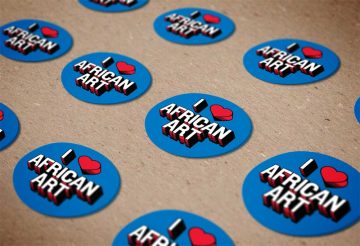South African artist Paul Emmanuel’s “Transitions,” an installation of five drawings and the critically acclaimed film 3SAI: A Rite of Passage, will open at the Smithsonian’s National Museum of African Art May 12 and continue through Aug. 22. The exhibition, which debuted in 2008 at The Apartheid Museum in Johannesburg, South Africa, addresses issues of identity, particularly those of a young white male living in post-apartheid South Africa. This is the first North American stop for the exhibition and video presentation. Both were very well received throughout South Africa, and the film has been featured in international film festivals where it garnered high praise.
The artist and project manager Les Cohn of Art Source South Africa will discuss “Transitions” Saturday, May 15, at 1 p.m. in the gallery. The program is free and open to the public.
“This provocative exhibition by Paul Emmanuel continues the tradition at the National Museum of African Art of showcasing the work of South African artists and attests to that country’s prominence as a dynamic center of outstanding contemporary art,” said Christine Mullen Kreamer, deputy director and chief curator. “In addition, the exhibition puts a spotlight on the wonderful art of drawing.”
“Transitions” comprises a series of five ostensibly “photographic” works which, when examined closely, reveal sensitively hand-drawn, photo-realist images on photographic paper. The works contemplate manhood and the transitions an individual goes through in society.
The adjacent video installation explores the liminal moments of transition, when a young man is either voluntarily or forced to let go of one identity and take on a new identity as property of the state. The 14-minute film documents the head shaving of new recruits at the Third South African Infantry Battalion (3SAI) in Kimberley, one of two South African military training camps that still perform the obligatory hair shaving of army recruits joining the South African National Defence Force.
For the artist, such observed moments raise questions about what one actually witnesses in such rites of passage and how these and similar “rituals” help to form and perpetuate identities and belief systems throughout history. Why is one so powerfully drawn to and transfixed by these dramatic spectacles of subtle change and moments of suspended possibility and impossibility?
A graduate of South Africa’s University of the Witwatersrand in 1993, Emmanuel was the first recipient of the prestigious Ampersand Fellowship, which recognizes emerging South African artists and supports a residency in New York. He was born in Zambia and lives and works in Johannesburg.
Of “Transitions,” the artist has said, “The production of this body of work is a love affair with concept and surface.”
Organizer and Sponsors
The exhibition was organized by Les Cohn of Art Source South Africa. Kreamer is the coordinating curator at the National Museum of African Art.
About the National Museum of African Art
The National Museum of African Art is America’s premier museum dedicated to the collection, conservation, study and exhibition of traditional and contemporary African art. The museum is open daily from 10 a.m. to 5:30 p.m., except Dec. 25. Admission is free. The museum is located at 950 Independence Avenue S.W., near the Smithsonian Metrorail station on the Blue and Orange lines. For more information about this exhibition, call (202) 633-4600 or visit the museum’s website at africa.si.edu. For general Smithsonian information, call (202) 633-1000 or TTY (202) 633-5285.
